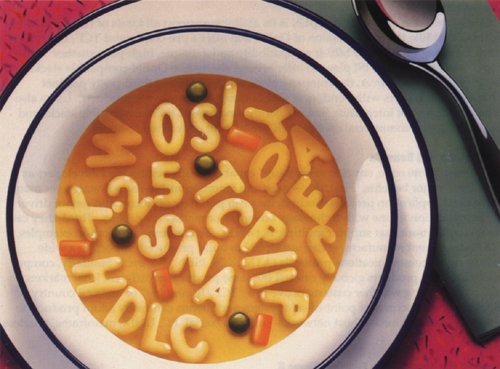
Cross-posted From Henry Thornton.
Try saying that after a hearty meal finished off with a beaker of brandy.
We learn about this new-old concept courtesy of Peter Wells in the AFR, who has been reading Tweets from Bill Goss, bond trader extraordinary, and talking to at least one of the Aitken Brothers.
ZRIRP stands for Zero Real Interest Rate Policy. Last time the world had Zero Real Interest Rates, Mr Wells asserts, was in the 1970s, an ugly decade with an ugly combination of high umemployment and high inflation – STAGFLATION for those who can still remember long words.
In fact, most developed nations have hadnegative real interest rate policy (NRIRP) since the Global Financial Crisis (GFC). Alphabet soup is fun, as Henry used try to convince his first offspring – we gave up on numbers 2 & 3, incidentally.
Anyway, economists worth their soup have been waiting with some anxiety to discover what NRIRP means for the global economy. The alarms whenever the US Fed hints it might remove NRIRP suggest things might turn ugly in the red corner, though one is informed that the Fed is confident that, like hitting ones head against the wall, the pain will eventually subside, at which point the final big hit of actually removing the massive stimulus will be administered.
NRIRP, combined with QE, and statements about ‘doing what it takes’ (DWIT) delivered by econocrats in high places (EiHPs) has finally breathed life into the economies of the developed nations. This has happened while goods inflation has been low to declining, giving the EiHPs anxiety that there may be DEFLATION on their watch.
Henry’s research shows that a combination in which monetary policy and goods inflation seems to be under control produces (predictable) asset booms, not so silly when US share prices are hitting new records, a matter that some market gurus even predicted, as Mr Wells reports.
Now we must apply this logic to the Australian economy. To her credit the Old Lady of Martin Place (OLoMP) resisted the ZRIRP of the major nations. Goods inflation stayed under control, and so did asset inflation, especially housing. Wall Street influences our equity markets directly, so we must look for asset inflation effects independent of the Wall Street effect in asset markets more insulated than stock markets.
Now, and finally, the dire domestic goods and labor market situation, with understandable fear of DEFLATION, has finally lead the OLoMP to begin the slippery slide toward ZRIRP in the previous ‘miracle economy’ that is Australia. Evidence comes in two forms – Henry’s columns on monetary policy, and today’s report that vehicle workers in Adelaide may be about to vote for a three year wage freeze(except for increases justified by productivity increases.
As interest rates fall from responsible levels to dangerous levels, quick as a flash we see signs of a … wait for it … a renewed housing boom (RHB).
As Milton Friedman once said, and Henry has striven to remind readers about, ‘monetary policy cannot serve two masters’ (henceforth MPCS2Ms).
If the OLoMP really believes monetary policy should be easier, and who could doubt this, then it needs a separate lever to pull gently on to prevent a RHB (renewed housing boom) turning into a NHBb (new housing bubble).
Imagine the chaos and anger if the OLoMP actually did something like raise the required reserve ratio (RRR) of the banks when the RHB has only just started, and during an election campaign to boot.
Good hunting, pollies and good investing punters.

